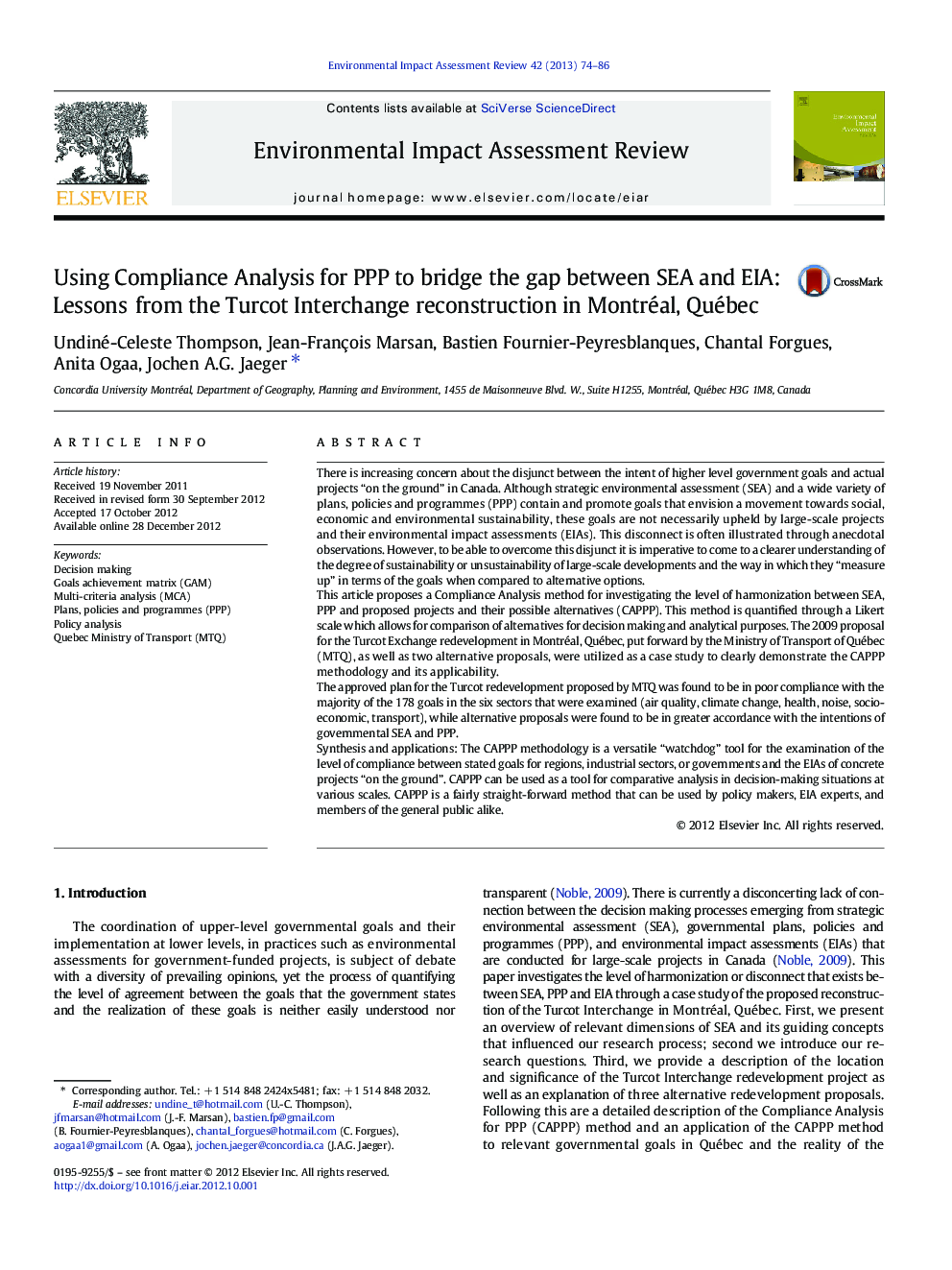| Article ID | Journal | Published Year | Pages | File Type |
|---|---|---|---|---|
| 1052801 | Environmental Impact Assessment Review | 2013 | 13 Pages |
There is increasing concern about the disjunct between the intent of higher level government goals and actual projects “on the ground” in Canada. Although strategic environmental assessment (SEA) and a wide variety of plans, policies and programmes (PPP) contain and promote goals that envision a movement towards social, economic and environmental sustainability, these goals are not necessarily upheld by large-scale projects and their environmental impact assessments (EIAs). This disconnect is often illustrated through anecdotal observations. However, to be able to overcome this disjunct it is imperative to come to a clearer understanding of the degree of sustainability or unsustainability of large-scale developments and the way in which they “measure up” in terms of the goals when compared to alternative options.This article proposes a Compliance Analysis method for investigating the level of harmonization between SEA, PPP and proposed projects and their possible alternatives (CAPPP). This method is quantified through a Likert scale which allows for comparison of alternatives for decision making and analytical purposes. The 2009 proposal for the Turcot Exchange redevelopment in Montréal, Québec, put forward by the Ministry of Transport of Québec (MTQ), as well as two alternative proposals, were utilized as a case study to clearly demonstrate the CAPPP methodology and its applicability.The approved plan for the Turcot redevelopment proposed by MTQ was found to be in poor compliance with the majority of the 178 goals in the six sectors that were examined (air quality, climate change, health, noise, socioeconomic, transport), while alternative proposals were found to be in greater accordance with the intentions of governmental SEA and PPP.Synthesis and applications: The CAPPP methodology is a versatile “watchdog” tool for the examination of the level of compliance between stated goals for regions, industrial sectors, or governments and the EIAs of concrete projects “on the ground”. CAPPP can be used as a tool for comparative analysis in decision-making situations at various scales. CAPPP is a fairly straight-forward method that can be used by policy makers, EIA experts, and members of the general public alike.
Graphical abstractFigure optionsDownload full-size imageDownload as PowerPoint slideHighlights► We investigated the level of harmonization between SEA, plans, policies and programmes and EIA projects. ► We created a new methodology: the goal compliance analysis (GCA). ► We tested it on an ongoing project, the Turcot Interchange in Montreal, Canada. ► The method is straight-forward and can be used by policy makers, EIA experts, and members of the general public alike.
